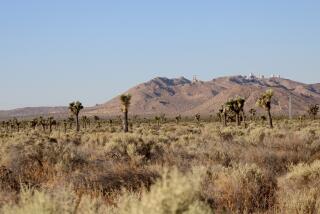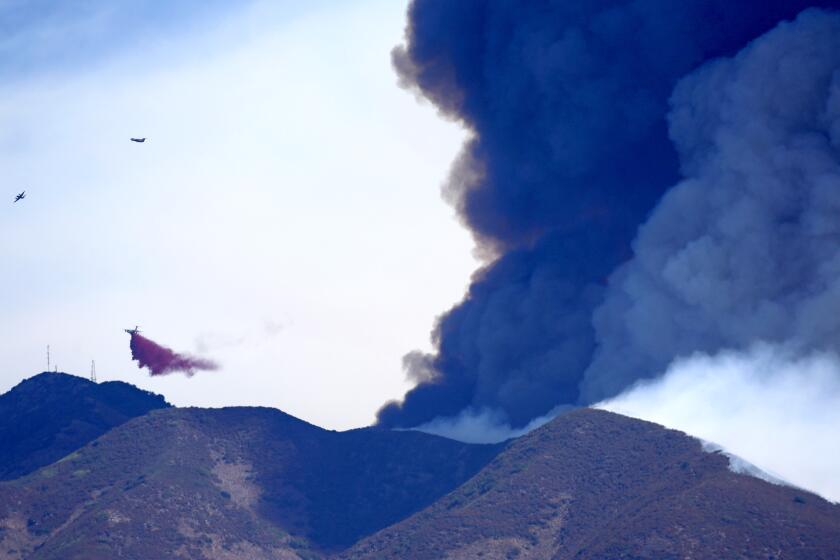Readers React: Save the Earth, but don’t destroy a desert
To the editor: I have driven through and visited the Silurian Valley on trips to and from Death Valley. The road from Baker north to Death Valley is a journey through time: vast, beautiful, haunting. Now an energy firm from Spain wants to place a solar and wind project that would scrape and cover 24 square miles of this pristine valley. (“Will renewable energy ruin an ‘irreplaceable’ Mojave desert oasis?,” Nov. 8)
This valley is home to important bird migration paths and hidden waterways that support wildlife in this barren dry land. These along with magnificent viewsheds would be lost. Destroying this area for clean energy would be like mowing down the redwoods to a achieve the same goal.
Make every rooftop and parking lot in Southern California home to solar panels. Otherwise we’re biting off our nose to spite our face.
Randy Winbigler, Cathedral City
..
To the editor: The California Renewable Energy Standard mandating that one-third of the state’s electrical energy be from renewable sources by 2020 has encouraged a large number of entrepreneurs to offer various schemes to accomplish this.
Iberdrola Renewables’ proposed 200-megawatt wind farm with 133 towers is not likely to begin to solve the mandate. A rating of 200 megawatts does not necessarily mean that the farm will provide 200 megawatt-hours of energy every day.
On the contrary, the Los Angeles Department of Water and Power’s Pine Tree Wind Farm in Tehachapi is rated at 120 megawatts. But according to a 2012 DWP report, Pine Tree averaged less than 50 megawatt-hours over the 30-day period.
Further, solar power is even less efficient and fails to provide energy at night and cloudy days.
Gordon Osborne, Woodland Hills
The writer is a former DWP power engineer.
..
To the editor: The impacts of renewable energy development on recreation are not often discussed, so I was pleased to see the images of families enjoying the Dumont Dunes Off-Highway Vehicle Area among your others of the Silurian Valley.
The thousands of families who enjoy Dumont Dunes each year go there for the unspoiled vistas and open desert spaces. These are becoming increasingly rare as both the front country and back country have become targets for utility scale development. Last year, the Johnson Valley OHV Area lost 132,000 acres to the expansion of the Twentynine Palms Marine combat training base.
The Bureau of Land Management has already set aside lands for renewable energy, and areas like Silurian Valley are supposed to be a last resort for development. I don’t believe we have reached that last resort.
Randy Banis, Lancaster
Follow the Opinion section on Twitter @latimesopinion
More to Read
A cure for the common opinion
Get thought-provoking perspectives with our weekly newsletter.
You may occasionally receive promotional content from the Los Angeles Times.










